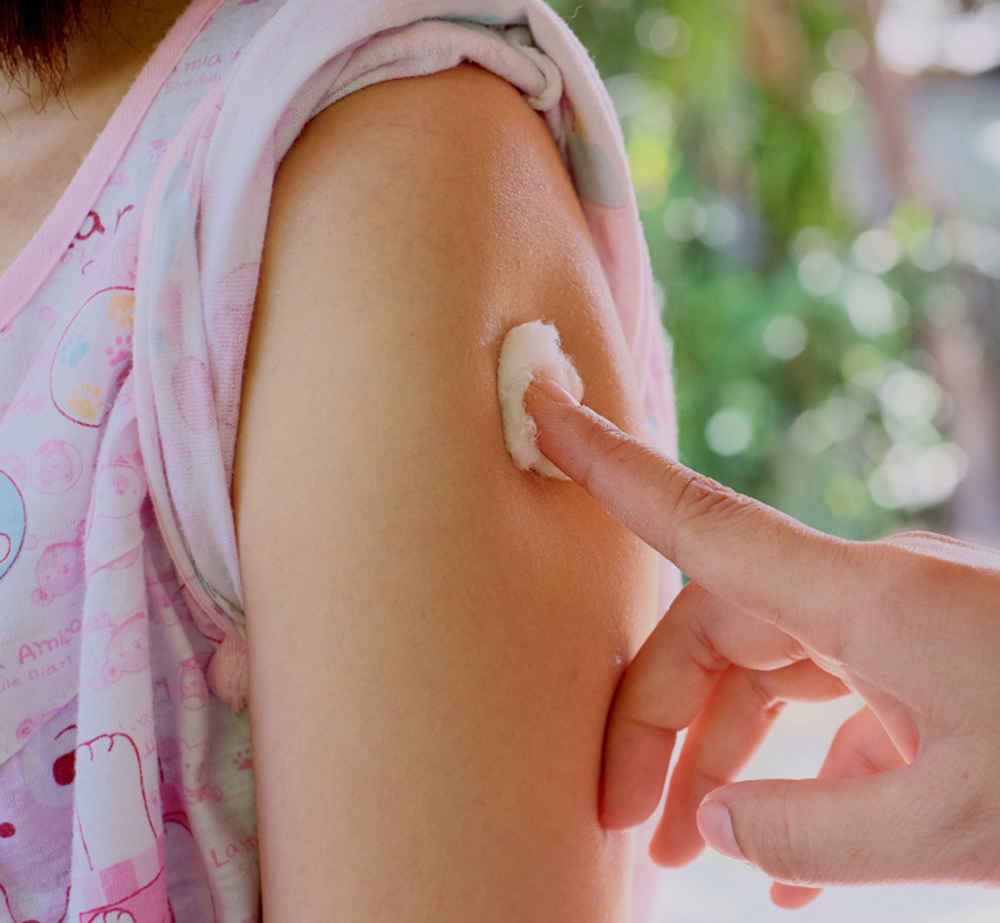410-721-2273
Lyme Disease
What is Lyme disease?
Lyme disease is spread by a tick bite. Complications from this disease, however, are rare. Giving up picnics, hikes, and camping because of this pest is an overreaction to the small risk.
Lyme disease has been divided into three stages. If treated with antibiotics, it does not progress from one stage to the next.
Stage I: 3 to 30 days after the tick bite
- A unique rash develops in 80% of infected people. The rash (called erythema migrans) looks like a large red ring or bull's-eye that starts where the person was bitten and expands in size.
- The rash at the bite becomes larger than 2 inches (5 cm) across. A small rash (the size of a dime or quarter) is not Lyme disease.
- The rash is neither painful nor itchy.
- It lasts 2 weeks to 2 months.
- Many children develop additional smaller spots scattered in other areas of the body.
- Some children develop a flulike illness including fever, chills, sore throat, and headache that lasts for several days.
Stage II: 2 to 12 weeks after the tick bite
- Only about 15% of the people who have not received treatment for the disease develop stage 2 problems.
- The main symptoms are related to the nervous system; for example, stiff neck, weak facial muscles, and weakness or numbness of the hands and feet.
- A few children develop some problems with heart rhythm.
Stage III: 6 weeks to 2 years after the tick bite
- About 60% of the people who have not gotten treatment for the disease will have stage 3 symptoms.
- Often these people have had no stage-II symptoms.
- The main symptom of this stage is recurrent attacks of painful, swollen joints (arthritis). It usually affects the knees. The arthritis becomes chronic in 10% of children.
What is the cause?
Lyme disease is caused by a type of corkscrew-shaped bacteria called spirochetes. The bacteria are transmitted by little deer ticks the size of a pinhead, dark brown, and hard to see. Lyme disease is not carried by the more common wood tick, which is bigger (1/4 to 1/2 inch in size).
In most states only 2% of deer ticks carry Lyme disease. In the New England states, Wisconsin, and Minnesota, however, up to 50% of deer ticks are infected with Lyme disease. But even in these high-risk areas, only 1% of children bitten by a deer tick get Lyme disease.
If not removed, a tick will stay attached to a person's skin and feed there for 3 to 6 days. For Lyme disease to be transmitted, the tick needs to be attached for at least 24 hours. You are more likely to get the infection if the tick remains attached for more than 48 hours.
How is it treated?
Lyme disease is usually cured by 14 days of oral antibiotics if it is diagnosed during stage I. If it is not diagnosed until stage II or III, a month of antibiotics may be necessary, and the antibiotic will probably be given by injection into a muscle or vein.
Antibiotics should be given to any child who develops a rash characteristic of Lyme disease within 1 month of having a deer tick bite or within 1 month of being in a high-risk area. Remember that most deer tick bites do not pass on Lyme disease.
How can I help prevent tick bites?
Use repellent: Put insect repellent that contains permethrin or picaridin on clothing to repel ticks and other insects. These repellants are more effective than DEET against ticks. Examples of these products include, Duranon, Permanone, and Congo Creek Tick Spray. Apply it to clothes, shoes, and socks before your child gets dressed. You can also put it on other outdoor items (mosquito screen, sleeping bags). Do not put this kind of repellent on the skin because it does not work well on skin.
Do a tick check: Ticks like to hide in underbrush and shrubbery, especially during spring and early summer. Ticks cannot jump or fly, but crawl onto the skin. Children and adults who are hiking, picnicking, or playing in tick-infested areas should wear long-sleeved shirts and long pants and tuck the ends of the pants into their socks. While you are outside look for ticks on each other every 4 hours and remove any ticks on the clothing or exposed skin.
Because a tick's bite is painless and doesn't itch, a person usually does not know that he or she has been bitten by a tick. Immediately after being outside or at least once a day, check the bare skin. Ticks like hair and dark places, so carefully check the scalp, neck, armpit, and groin. A brisk shower will remove any tick that isn't firmly attached.
If you find any ticks, remove them right away. Removing ticks promptly may prevent infection because the tick must be attached to the skin at least 24 hours before it can transmit Lyme disease. Also, a tick is easier to remove before it becomes firmly attached.
Wash your dog: To prevent the spread of Lyme disease by your dog, wash him with an anti-tick soap during the spring and summer months. Check for ticks on him if he goes with you on a hike. Pull off any ticks that you find.
How do I remove the tick?
The simplest and quickest way to remove a tick is to pull it off. Use tweezers to grasp the tick as close to the skin as possible (try to get a grip on its head). Pull gently and steadily upward until the tick releases its grip. Do not twist the tick or jerk it suddenly. Such maneuvers can break off the tick's head or mouth parts. Do not squeeze the tweezers to the point of crushing the tick because the secretions released may spread disease.
If you don't have tweezers, pull the tick off in the same way using your fingers, a loop of thread around the tick's jaws, or a needle. Some tiny ticks need to be scraped off with a knife blade or the edge of a credit card.
Sometimes the tick's body comes off but the head stays in the skin. You must remove the head also. Use a sterile needle to remove the head just as you would to remove a sliver.
Dispose of the tick by returning it to nature or flushing it down the toilet. You don't need to save the tick for positive identification. Don't crush ticks with your fingers because crushing increases your chance of getting a disease.
Wash the area of the tick bite and your hands with soap and water after you remove the tick.
Do not use petroleum jelly, fingernail polish, or rubbing alcohol to try to remove ticks. Attached ticks do not back out when covered with these products. Touching the tick with a hot match does not make the tick detach. In fact the hot match could make the tick vomit infected secretions into the wound.
Call 911
Call our office immediately if:
(410) 721-2273
- You can't remove the tick or the tick's head.
- Fever or widespread rash occurs in the 2 weeks after a tick bite.
- Your child starts acting very sick.
Call us during office hours if:
- You think your child might have Lyme disease (your child has a rash that looks like a bull's-eye near the bite).
- You have other questions or concerns.
Written by B.D. Schmitt, MD, author of "Your Child's Health," Bantam Books.
This content is reviewed periodically and is subject to change as new health information becomes available. The information is intended to inform and educate and is not a replacement for medical evaluation, advice, diagnosis or treatment by a healthcare professional.
You May Also Like
Popular Resources | Make an Appointment • Locations • Refill Prescriptions





